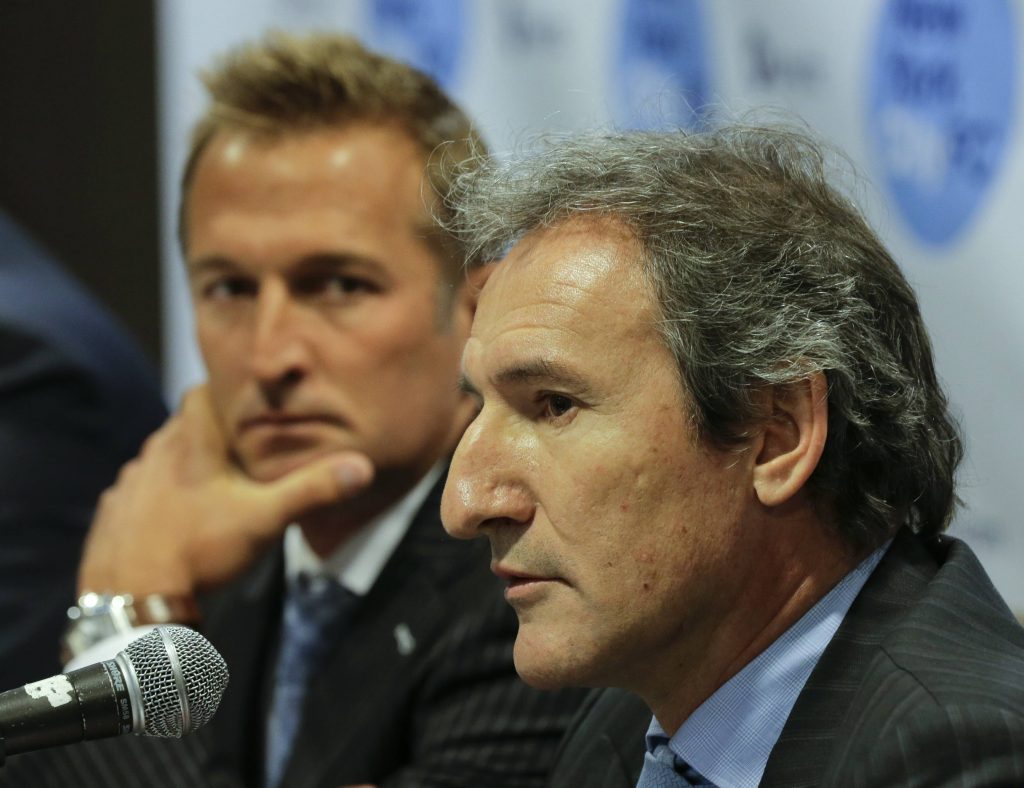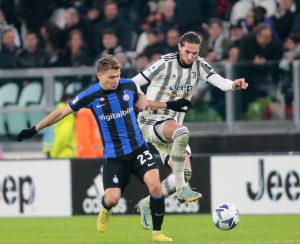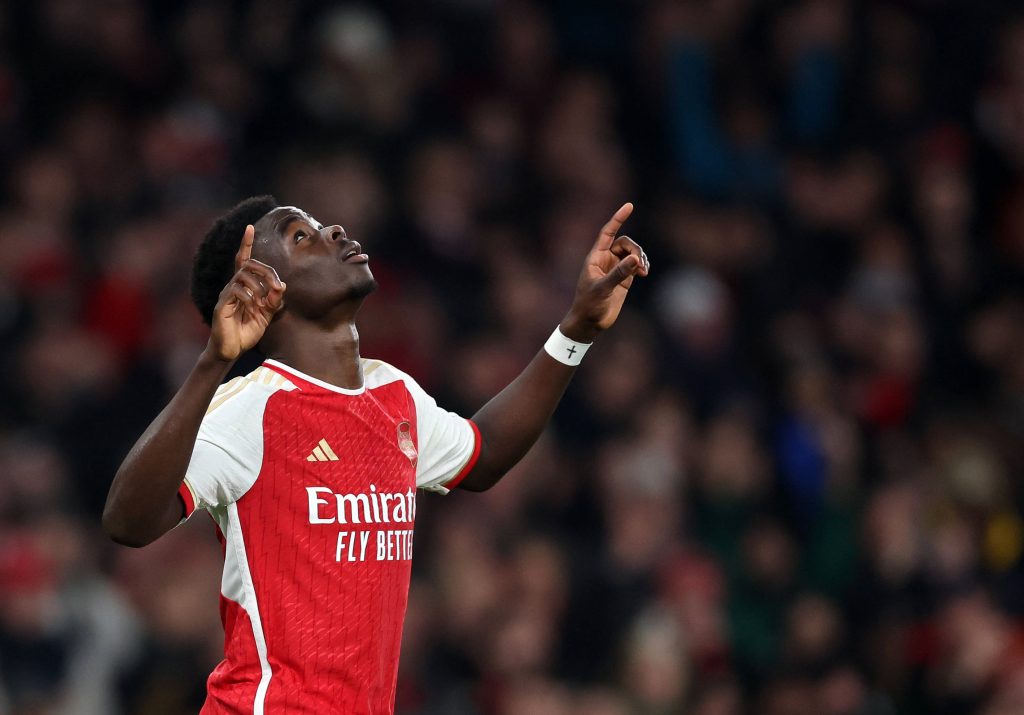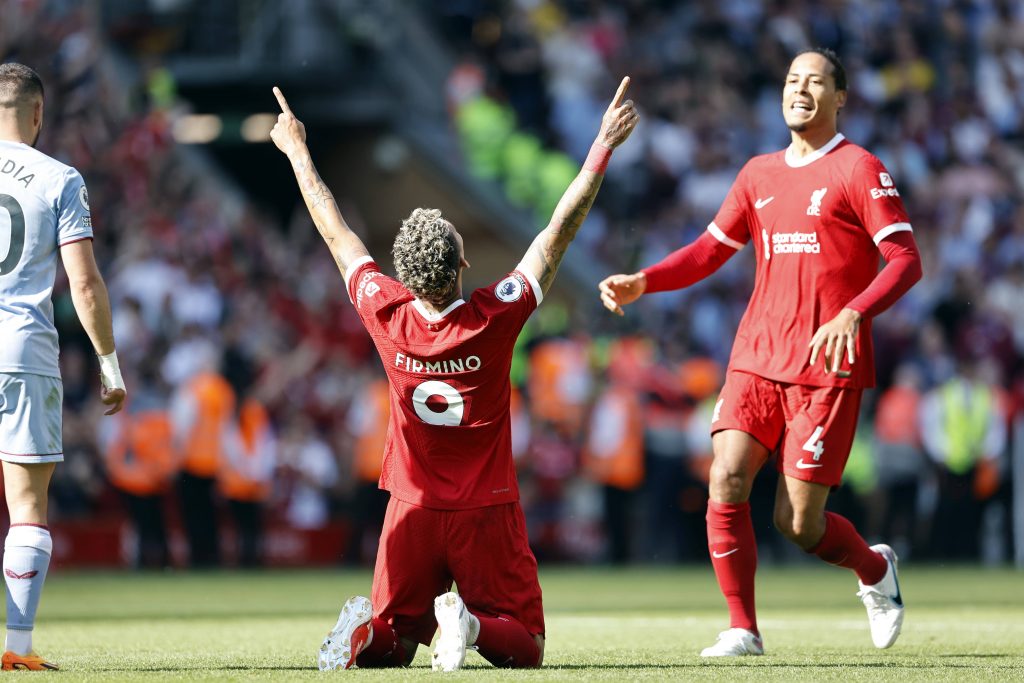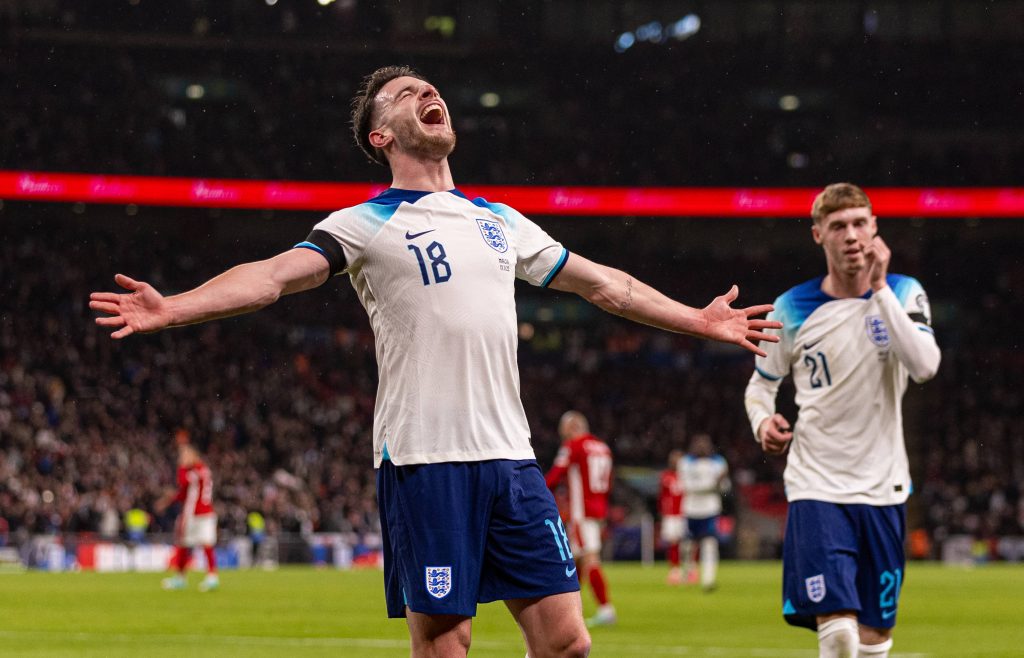Josh Hobbs continues his analysis of the game’s greatest Transfer Gurus.
We kicked off the Transfer Gurus series by looking at the work of Michael Edwards in transforming Liverpool into one of the best teams in world football. Although the series will not be focused entirely on the Premier League, it makes sense to follow this up with an exploration of Txiki Begiristain and his time at Manchester City.
Edwards’ work at Liverpool had to be particularly smart to compete with the spending power which Begiristain has had at his disposal but that is not to say that Manchester City have not done some good work of their own in the market.
During the former Barcelona executive’s time at City, they have signed such notables as Kevin De Bruyne, Rodri, Ruben Dias, Jack Grealish, Aymeric Laporte, Ederson, Raheem Sterling, Bernardo Silva and many more. They have also won almost all there is to win at the highest level with only the Champions League eluding them at this point.
This piece will shine a light on some of the excellent work City have done to the squad under the Spaniard, before noting some issues that a club with lesser resources than Manchester City would not be able to absorb.
Overview
Firstly, let’s look at the big picture at the Etihad during Begiristain’s period as director of football. The Spaniard has been in the job since October 2012, making the January window of 12/13 his first at the club. Since then, City have spent £1.34 billion on 64 players and received £490.91 million for 78 outgoings. This gives them a net spend of £853.81million.
Here is how those transfers were spread according to age:
In this series, we will discuss four different age ranges. Peak age is shown on the graph and comprised the years between 24 and 28. The other three categories are ‘potential’ (17-20), ‘pre-peak’ (21-23) and ‘diminishing returns’ (29+). Keep that in mind as you assess the graph above as these categories will be referred to throughout the piece.
As you can see, the player profiles most targeted both in terms of buying and selling were those who just coming into their peaks. However, it’s important to notice the interesting second peak when it comes to outgoings. As you can see, City have moved on a lot of players late on in their careers. Another thing to note is that the 19-20 and the 20-21 age groups are the joint second highest peak in City’s incomings. There is a clear strategy here which we will explore later.
It is worth pointing out that the small uptick of incomings around 31-32 is made up of backup goalkeepers and the free transfer of Bacary Sagna, alongside the slightly strange buy of Martin Demichelis.
Buying players with the potential to be ‘world class’
Since the Abu Dhabi takeover of Manchester City, the club have spent vast amounts in transfer fees. However, it’s notable that whilst teams like PSG, Barcelona and Real Madrid have regularly paid eye-watering fees for players, City have managed their spending a little better. Grealish is the only player the Citizens have paid over £70 million for, although they did break that barrier significantly by paying £100 million to take him from Aston Villa.
Interestingly though, City have a different strategy to the afore-mentioned global super clubs. They do not look to buy established ‘world class’ players like those other teams do. Instead, Begiristain looks to identify players who can become ‘world class’ whilst at Manchester City.
In fact, this has been a strategy throughout the ownership’s time at the club. Whilst David Silva, Yaya Toure and Sergio Aguero could all be considered ‘world class’ in their positions, they were not at the time they were brought to the Etihad.
Under Begiristain, this strategy of picking up players with high potential or just coming into the start of their peak years and blossoming into elite talents with City has continued. Here is the list of all the ‘potential’ age incomings in that time period:

There are two things to focus on from this particular group, the first being those players who have made a notable impact on the first team and the other being players City have bought to trade. We will focus on the first team players right now but will return to the second point later on.
This list of players who went on to be first-team players includes four very successful signings at the top. Two remain at City in Raheem Sterling and Gabriel Jesus. Beyond that, Ferran Torres can be considered a success as the club made a profit on his sale back to Spain with Barcelona. Leroy Sane is perhaps one they might look upon with regret due to losing him for a significant period due to injury but again, he performed well for the club and they sold him for around £8 million more than they bought him for.
Sterling deserves a little more attention here. Like some other of City’s stars, the fee paid for him was thought of as very high at the time of purchase. It was the second-highest fee paid that summer, and given that Sterling was still several years from his peak, it seemed a huge amount. He had been superb in his breakout season for Liverpool with the Reds narrowly missing out to City in the Premier League title race. But he hadn’t quite shone in the same way in his final season at Anfield.
However, Sterling has been a key part of Pep Guardiola’s attack over the years. He has scored 128 goals and assisted 97 across 329 appearances in all competitions. The last five seasons have seen him break ten goals in the league as he transformed into a genuine goal poacher under Guardiola.
The Spaniard worked to make off-the-ball runs a major part of Sterling’s game and it isn’t unusual to see him scoring the kinds of tap-ins regular goalscorers do:
The former Liverpool man may have had a lot to prove when arriving in Manchester but he is now undoubtedly one of the top wide forwards in the world.
It would also be remiss to move on from this group without mentioning Olksandar Zinchenko. The Ukrainian is perhaps the best value deal made during Begiristain’s time as director of football. Picked up for less than £2 million as a 19-year-old, he has since played 118 times for the club.
The next group to focus on are the pre-peak signings:

Under Begiristain, City have been happy to break £40 million on players in this age range and have done so seven times. Interestingly, of that group of seven players, only Bernardo Silva is an attacking player, with five being defenders and the other a defensive midfielder in Rodri.
Ederson doesn’t cross the threshold of a £40 million spend but his was a high fee for a 23-year-old goalkeeper. Like Sterling though, the fee has looked excellent value, given the effect he has had on the team. It’s hard to imagine another goalkeeper suiting the way Guardiola wants the team to play like the Brazilian.
The majority of the big transfers in that group would also have to be considered successes. Silva looked like he might leave last summer but has found a regular place in the team this season, and with him and De Bruyne, City have two of the best creative midfielders in the world. Now 27-years-old and firmly in his prime, the Portuguese has 10 goals and 4 assists in his 40 appearances in all competitions in 2022. From here, paying £45 million to take him from Monaco at 22 just seems like more good business.
Looking a little more at Rodri, the Spaniard has taken on the mantle from Fernandinho as the player that provides the platform for City’s two ‘free eights’ to go and create. City paid over £55 million to take him from Atletico Madrid at 23.
This was an interesting transfer in terms of the scouting process. Whilst the talent identification wasn’t remarkable as Rodri had a very impressive season in midfield for Atletico in 18/19, he has been gone on to play a very different role for Guardiola than the one he was playing for Diego Simeone.
Rodri didn’t become the guaranteed first-choice in the role overnight but this season he is the lynchpin of the City team. In terms of the best defensive midfielders in the world, Rodri would certainly be one of those in the conversation.
As you can see from his TransferLab profile above, Rodri does a lot of important work to break up opposition counterattacks at source, winning interceptions and aerial duels in the centre and then playing simple passes to keep his side camped in the opposition half.
Also notable in this age group is the signing of Julian Alvarez. Alvarez was bought in January and immediately loaned back to River Plate. He may be regarded as the next Sergio Aguero at City but he could yet be loaned again for a full season next term so we will have to wait to see how things pan out before judging that one. No doubt the rumoured arrival of Erling Haaland could impact Alvarez’s trajectory at the club.
Finally in this section, we need to look at the peak signings:

Interestingly, the peak age signings are a little more hit-and-miss. The fees for Nicolas Otamendi and Nathan Ake look fairly high considering Otamendi’s struggles and Ake’s peripheral role in the team. Meanwhile Danilo, Wilfried Bony and Fernando all played little part in any success at the Etihad.
However, the top five players in terms of fees in this group are all still important players for the team. Time will tell on how the Grealish transfer will be judged, given that he is the record signing for the club but he is playing regularly and his output is still excellent. He is now part of a system, rather than carrying the whole attack as he did for Aston Villa.
TransferLab still rates Grealish as the best left winger in the Premier League in the ‘Wide Playmaker’ profile:
The player who sums up the ‘buy them before they’re world-class’ strategy better than any other, though, is Kevin De Bruyne.
Again, the fee of £68.4 million was seen as a risk at the time. The Belgian had played in the Premier League before at Chelsea and hadn’t grasped his opportunity under Jose Mourinho. He then went to Wolfsburg in the Bundesliga and delivered a magnificent 20 goals and 37 assists in only 73 appearances in Germany. These came in at 0.28 and 0.51 per 90, respectively.
This kind of output was monstrous and convinced City to pay the fee for De Bruyne, despite pundits in England warning that they were overpaying for a player who had failed in the Premier League before. In fact, on Soccer Saturday, Paul Merson said, “I do not see £50 million in this player. I thought it was Lira!”
De Bruyne has since scored 80 times and made 115 assists for City over 297 appearances. His goal contribution rate of 0.32 goals and 0.46 assists per 90 has been just as impressive as it was for Wolfsburg, despite the claims that he wouldn’t deliver at the same rate playing in England.
In recent seasons, De Bruyne has made scoring in important matches a regular occurrence, such as this opener against Atletico Madrid in the first leg of this season’s Champions League Quarter Finals.
The Belgian has become perhaps the most prominent proponent of the ‘half-space cross’. It is common to see City build on the right wing and for De Bruyne to drop back a few paces from the angle of the edge of the penalty box, before swinging a cross in. This has been very effective in opening up defences sitting deep, as well as catching out defences out of shape when delivered early.
As in the case of Sterling, the fee City paid for De Bruyne looks a complete bargain given that he has developed into arguably the best midfielder in the world whilst playing for them. A direct comparison could be made to City’s neighbours, Manchester United, here as they spent almost £95 million to bring Paul Pogba back to Old Trafford and his influence in Manchester has been nowhere near that of De Bruyne’s for City.
Making profit on young players
As mentioned earlier, the first two tables can almost be split in half. There are the signings who were clearly meant to be for the first team and who have a high success rate at the top. Then there are the signings that are made for much lower fees, who seem to be speculative signings from lower quality leagues.
These more speculative signings are often loaned out to further their development and then sold on. Many of these don’t deliver a profit but those that do are normally significant enough to make the overall practice a profitable one.
Examples of this are Jack Harrison—signed for £3.6 million and sold for £11.52 million, Angelino—bought for £1.8 million and sold for £16.2 million and Douglas Luiz—bought for £10.8 million and sold for £15.2 million.
As well as this, City have also sold players who have come through their youth system very well. Here are the outgoings from the ‘potential’ age group who Transfermarkt considered members of City’s first team. Note that there will be many more outgoings in this group that won’t have been included but which may have accrued some small fees or left for nothing:

Whilst Eric Garcia running down his contract and moving to Barcelona on a free will have been painful for City, the top end of this list contains some excellent transfer fees for players who hadn’t achieved much in the game at the time.
Jadon Sancho leaving for Borussia Dortmund as a 17-year-old and going on to earn the German club a fee of almost £73 million will be a sore one for Begiristain to take, but getting a fee of over £7 million for a 17-year-old without senior experience goes down as an excellent deal at the time, especially given that Sancho was forcing his way out of the club.
In an ideal world, City would be keeping a player like Sancho and developing him for the first team but their business model doesn’t tend to allow for players like him to have the time needed to develop. Phil Foden is a unique case in this regard. Instead, City buy players that can compete at the highest level immediately.
Holding onto peak players for too long
Finally, let’s take a look at the spike in outgoings in the diminishing returns phase. City have had 27 players leave the club at the age of 29 or over during Begiristain’s period at the club. But of these, only 10 have brought in a fee.

Beginning with the positives, the top five fees received here are all very good considering the age of the players. However, the problem is how many players have gone for little or no fee at all.
As you can see, first-team players have been allowed to remain at the Etihad well beyond their peaks and only moved on at the end of their contracts. There is a huge amount of lost revenue here as fees could have been recovered for many of these had they been moved on sooner. Looking at the list, Sergio Aguero, David Silva and Yaya Toure are more acceptable given that they had a lot to offer the club even in their later years but the others are merely a drain on the wage bill by the point of their departure.
One would speculate that the reason City find it hard to move these players on is because of the high wages and length of contracts offered, meaning they have no incentive to leave when they won’t find better deals elsewhere.
This is an example of where City’s financial power stands out, though. Returning to our study of Liverpool under Edwards, there is no way that the Reds could continue to spend in the way they have whilst absorbing the losses City have done. Meanwhile, Begiristain is able to make several signings in the £40-60 million bracket each summer, despite missing out on transfer fees for players.

Looking at the peak outgoings table above, you can see that the volume of outgoings is high but the fees received are low. Danilo and Leroy Sane are the only two good fees coming in but there are big losses on players like Javi Garcia, Wilfried Bony and Stevan Jovetic.
Conclusion
It’s hard not to say that Begiristain has done an excellent job with the squad build at Manchester City. He has delivered a team filled with world-class players and has done it without breaking the £100 million barrier on multiple occasions like some of the other clubs that have similar spending power.
However, we must acknowledge that with City, he has been able to make multiple signings of £50-£60 million every summer, something very few people in charge of recruitment will ever do in even one summer, let alone every single season.
That has allowed him to cover for missteps easily. For example, when previous signings at centre back didn’t provide the kind of stability Guardiola needed, Ruben Dias could just be brought in for £61.2 million.
Still, City’s squad build looks much more sensible and balanced than teams such as PSG, Barcelona or Real Madrid. Meanwhile, Manchester United have been left behind when it comes to both the quality of the starting eleven and their strength in depth. Chelsea have lagged behind as well in recent years, despite enormous spending of their own and how they will make up that ground is unknown, given their ownership situation.
One thing that is for sure, under Begiristain, City have built one of the strongest squads in world football. The way that squad build has been funded may be murky with City’s various sponsorship deals over the years continuing to be investigated. However, on the field, success continues to come. Guardiola may not remain manager much longer but with the quality of player available and the structure in place, it’s difficult to imagine City won’t continue winning.
Header image copyright IMAGO/UPI Photo
TransferLab uses event data from over 100 men’s and 20 women’s leagues from around the world covering around 100,000 male and 20,000 female players. It uses advanced analytics to assess each player’s past performance and help predict their future performance. The TransferLab Player Privacy Policy can be accessed here.

